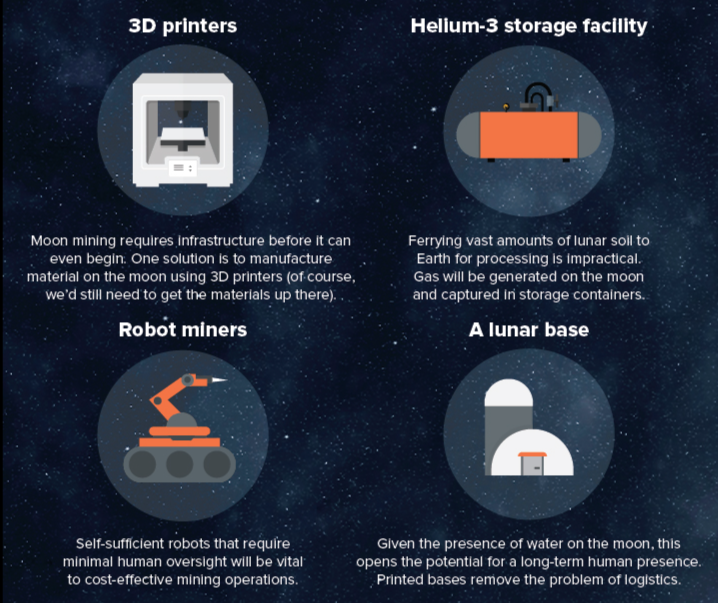
Courtesy of Space
Courtesy of ENERGYminute
See more articles and infographics from ENERGYminute HERE
Earthlings are channeling their inner Slim Shady, planning an Encore trip to the Moon and ready to say “Guess who’s back, back again”.
From Russia’s recent failed lunar mission to China’s discovery of helium-3 last year to NASA’s Artemis program, the space race has lifted off again. But this time, the contenders are looking to get their hands on the resources the Moon has to offer.
What’s up there?
It turns out, the Moon is made of things more valuable than cheese:
Helium-3: This could unlock the potential for nuclear fusion producing huge amounts of energy without radioactive waste. It’s very rare on Earth but very abundant on the Moon.
- It’s estimated that just 25 tons of Helium-3 could power the United States for an entire year.
Rare earth metals: Let’s call them rare moon metals have been found in moon rocks and are used in smartphones, EV batteries, computers, and more.
- China dominance in rare earth metals has many Western countries looking to reduce their reliance, especially as part of the energy transition.
Water: Ice crystals were discovered on the Moon and it is critical as a possible source of fuel (through electrolysis) and to support life if humans are to live there.
- Most of the water is expected to be found at the lunar south pole, which had been the target of Russia’s failed Luna-25 mission.
How the mining would work
It’s clear that there is a lot of potential on the Moon, and the intent of many of the space programs is to build out a moon base that would self-sustained. This could include using 3D printers for manufacturing and using helium-3 as the energy supply.
With water on the Moon, there is also optimism that humans could set up permanent settlements.

Courtesy of NASA
SpaceX has already revolutionized space travel with their reusable rockets that could significantly reduce the costs of getting equipment up to the Moon. NASA is also working with other private companies and startups in its lunar endeavors.
- NASA has awarded contracts totaling $150 million USD to several companies that are focused on building out infrastructure on the Moon for power and storage.
So, who owns the resources?
The 1967 Outer Space Treaty laid out guidance that no one country could claim to “own” space and that there shall be no weapons in space, which was signed by Russia, the UK, and the US – the biggest competitors in the space race at the time.
In 2020, the US led an initiative called the Artemis Accords as an updated framework for exploration of the Moon. Twenty-seven countries have given their John Hancock, but there are two countries that have yet to sign the agreement… China and Russia.
Zoom out: As space travel continues to progress, there will be more questions around governance and who has the right to mine in space. Ultimately, there isn’t clear rules in space. With a lot of historical beef between the big players in the space race, the geopolitics is also challenged.
+Infographic: NASA: Moon Mining
+Podcast: The Economist: Why the lunar South Pole is the latest focus in the new space race
Share This:




